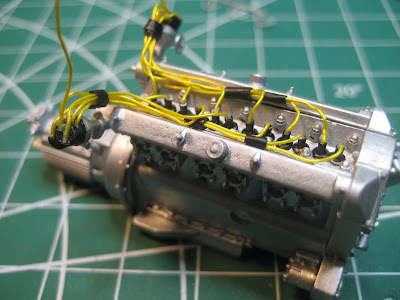When I first saw pictures of this car as a pimply teenager, it was lust at first sight. Still beautiful after all these years...
This Model Factory Hiro kit is definitely a Holy Grail kit, and it's been on the shelf for a good long while, waiting for me to gather the confidence to build it without screwing up. However, having done well on the 315 S and the Alfa Stradale, I think it's time; and it certainly looks like an easier build than either of those.
This early Model Factory Hiro kit (K123) is likely a re-release of the old Climax kit. It has bigger rear fender openings and a crude fender lip, compared to my mental image of this car. These interfere with the lines in my view; but a little digging revealed that several (perhaps 4) of the original 19 cars were built specifically for racing, and included a lower roof line as well as the prominent rear fenders and a pointier nose. This particular car DNFed at Le Mans in 1961 (battery failure at 24 hours, sadly! On distance covered, the car would have been 9th, ahead of a Triumph TR4S) and ran in the Japanese GP in 1963 (for which I can't find any info online). So I have reluctantly decided to build it out of box, rather than try to reproduce the "street" version.
Stay tuned!




























